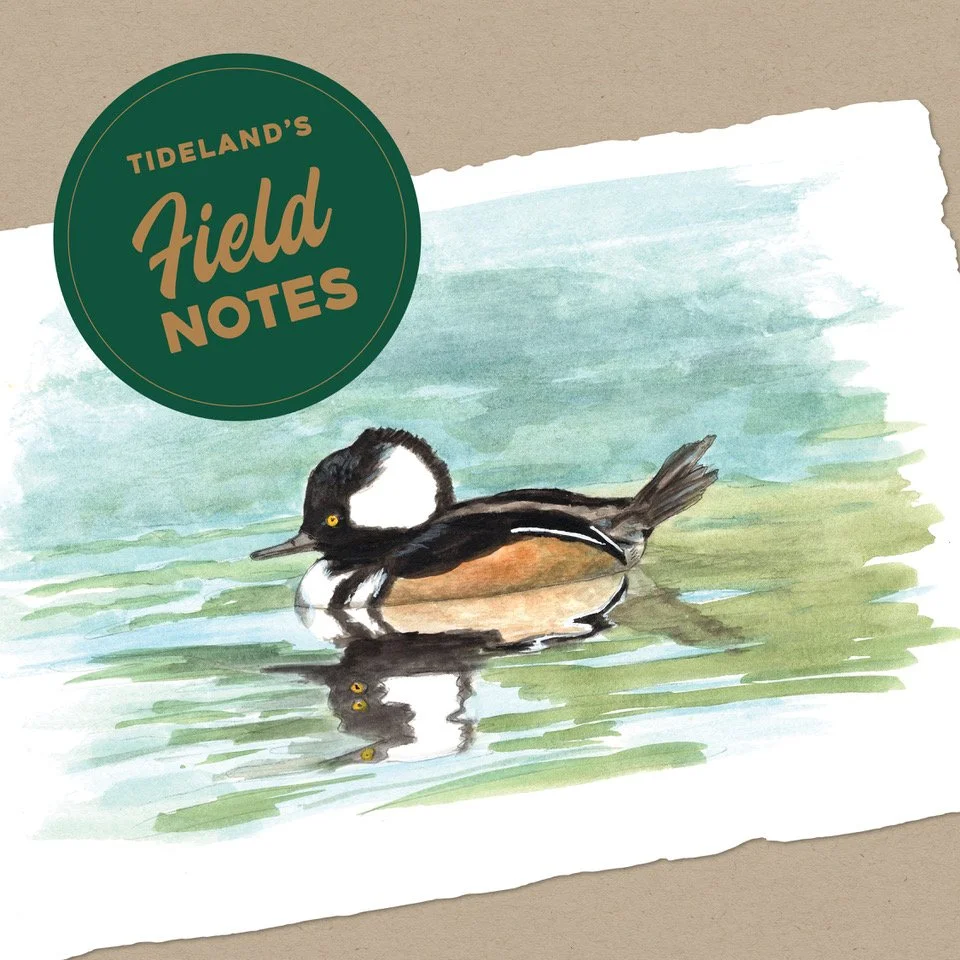winter birdwatching
Words by Nancy Blakey
Illustration by Mary Jo Davis
I came to birdwatching as a child through my grandmother’s kitchen window. Her feeder in northern Idaho attracted mainly chickadees, finches and white crowned sparrows that she named like a radio announcer as we watched. She told me their habits—which species were bossy or shy or greedy—and it made them as familiar as family. Through the years I began to bird by ear as well as by eye. It’s often easier to identify birds by song or call particularly in forests and heavy vegetation. I use the Merlin Bird ID app. It’s like Shazzam, only for birds, and it helps me quickly identify the hidden and shy ones.
Birds are abundant in the Pacific Northwest and winter is a wonderful time for long, attentive walks to birdwatch. Surrounded by the waters of the Hood Canal and greater Puget Sound, the Kitsap peninsula is world-class place to go birdwatching and a natural stopover on the Great Pacific Flyway, a 4,000-mile-long migratory bird route that runs from Alaska to Patagonia in South America. Bring binoculars, a waterproof notepad and pencil, layers of warm clothing and rain gear.
PRO TIP: Before you go, enter “Kitsap” in the “Explore Regions” search bar of the Explore page at ebird.org. It’s a rabbit hole of wonder to learn what other birders are observing around you, complete with location, photos and calls.
WHERE TO GO
POINT NO POINT LIGHTHOUSE AND PARK, HANSVILLE: The Point no Point Park is a designated Important Bird Area, identified as being globally important for the conservation of bird populations. With over 60 acres of wetlands, upland forest and shoreline, the park is a wintering place or stopover for many species, including red-necked phalaropes, ancient murrelets, loons, mergansers and buleheads. Head to nearby Foulweather Bluff for more coastal water birds, forest birds (red-breasted nuthatches and winter wrens) and eagles.
FORT WARD PARK, BAINBRIDGE ISLAND: One of seven key local sites designated by Audubon Society for migrating birds, this park has a good mix of forest birds (bushtits, chickadees, warblers) and shore birds (surf and white winged scoters, grebes). There’s also a bird blind overlooking Rich Passage to keep you dry.
KINGSTON AND BAINBRIDGE ISLAND FERRY TERMINALS: Waiting for a ferry? Keep binoculars in the car; both of these terminals are fine places to view shorebirds who overwinter here. Keep an eye out for wigeons, cormorants and surf scoters.
LIBERTY BAY, POULSBO: There are many parks around Liberty Bay for birdwatching. Oyster Plant Park, Fish Park, Liberty Bay Park and American Legion Park offer some of the best birding. With saltwater, forest, creek and wetland habitats, these parks give rise to a wild and wonderful mix of birds from mergansers and loons to towhees and finches.
CLEAR CREEK TRAIL, SILVERDALE: This lovely trail follows Clear Creek through wetlands, a remnant forest and a marsh-ringed tideland. It also offers opportunities to see both marine fowl, like greater yellowlegs and green-winged teals, and forest dwellers, like pileated woodpeckers, western tanagers and the gorgeous cedar waxwing. Keep your eye out for American goldfinches, our state bird. Clear Creak Trail has a website with a bird checklist visitors can download.
OTHER GREAT SPOTS: Bloedel Reserve, Bainbridge Island Silverdale Waterfront Park and Port of Bremerton Marina Park, Port Orchard
BE A CITIZEN SCIENTIST
Participate in the Audubon Christmas Bird Count, December 14 - January 5. Or join the The Great Backyard Bird Count, February 14 - 17, 2025.

